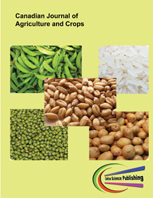Sorption Characteristics of Cocoyam (Colocasia Esculenta) at Different Temperatures
DOI:
https://doi.org/10.20448/803.4.2.200.207Keywords:
Sorption, Cocoayam, Water activity, Gravimetric method.Abstract
The exploitation of cocoyam (Colocasia esculenta) for food is limited to direct consumption of primary products which often result in huge post-harvest losses. This study reports the development and storage of flour from cocoyam with the intent of establishing suitable storage conditions for its storage. Fresh cocoyam corms obtained from the Federal University of Technology (FUTA) Research Farm, were peeled, washed, sliced, oven-dried and then milled into the powder. Insights into the is essential to maintain Good keeping quality of food materials is a function of the relationship between their air relative humidity (expressed as water activity (aw)) and equilibrium moisture content. The gravimetric method was used to determine the adsorption isotherms of cocoyam flour. In the range of temperature (20 - 40 oC) and aw (0.10 - 0.80) typical of the tropical environment, different concentrations of concentrated acid (H2SO4) solutions were used to vary the condition of the research area. The experimental data were compared with six widely recommended models for food sorption isotherms (GAB, BET, Oswin, modified Oswin, Hasley & Smith). The plot of moisture sorption isotherms also resulted in a sigmoidal shape which is influenced by temperature variation. Generally, the Modified Oswin model was found most suitable to describe the sorption isotherm of cocoyam flour.


